Nine powerful, information-packed lessons that are based on the book Safe Movement for All Spines take you on a deeper dive into movement and pain science.
Mentoring sessions provide real-time access to a collaborative environment for learning actionable techniques to apply to current clients, or oneself, right away.

What you will learn:
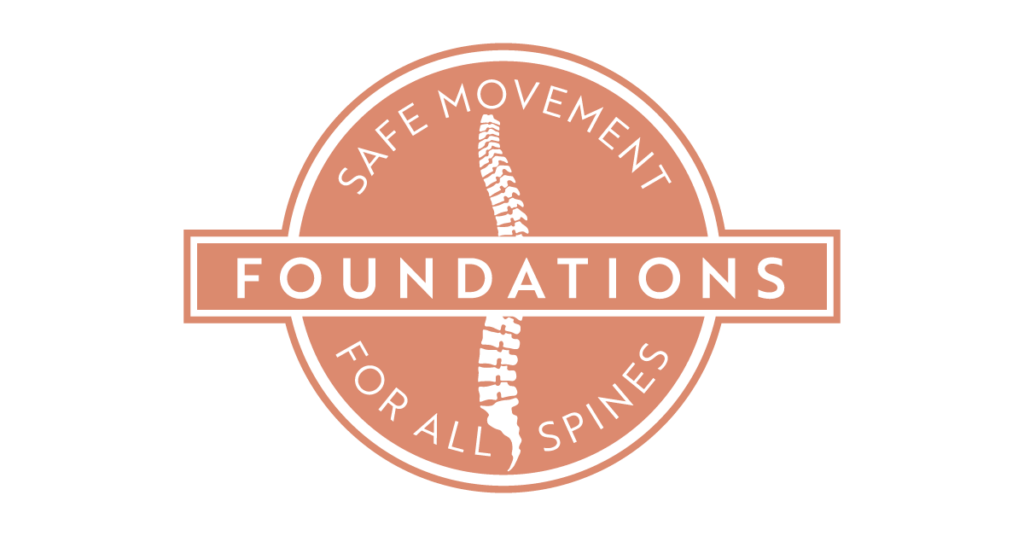
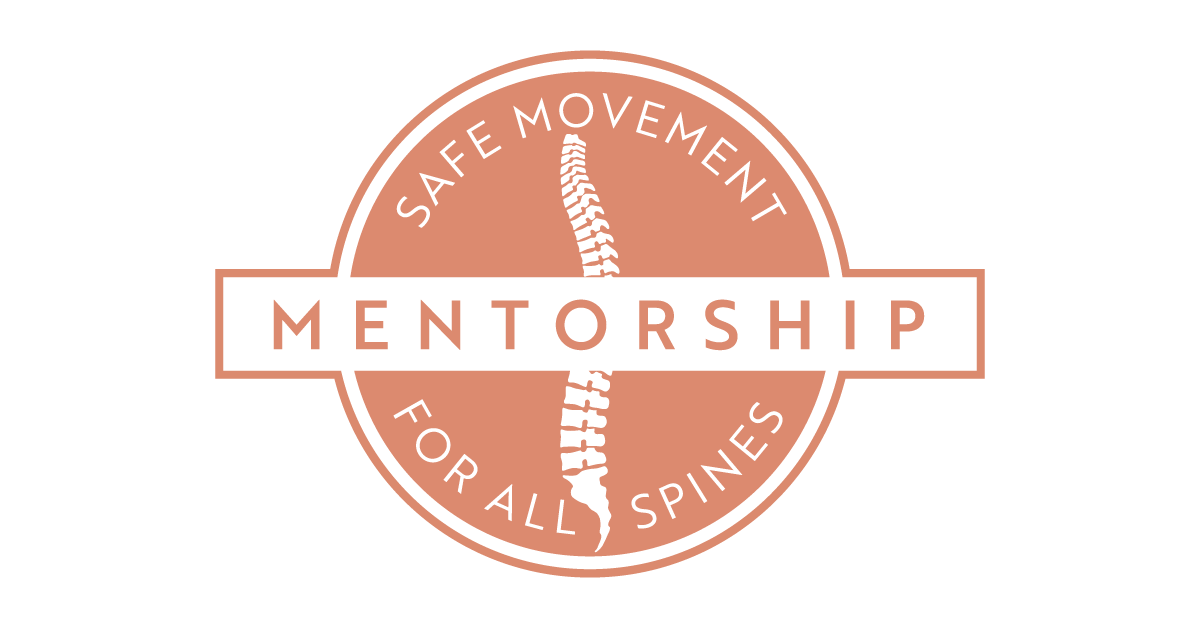
Foundations or Mentorship
Both options contain the core, 9 Pre-recorded Lectures
So what’s the difference?
|
Yes |
Yes | |
|
Study Guides |
Yes |
Yes |
|
Student Assignment Sheets |
Yes |
Yes |
|
Live Practical Classes |
Yes | |
|
Practical Course Recordings |
Add-On |
Yes |
|
Private Facebook Group |
Yes |
Yes |
|
Safe Movement for All Spines Book |
Yes |
Yes |
|
Group Mentoring |
Yes | |
|
Individual Mentoring + Case Study Support |
Yes | |
|
Lifetime Access To Curriculum |
Yes |
Yes |
|
ACE CECs |
3.6 |
7.2 |
|
NCPT |
19 |
60 |
|
IAYT CECs |
20 |
72 |
|
YA CECs |
19 |
70 |
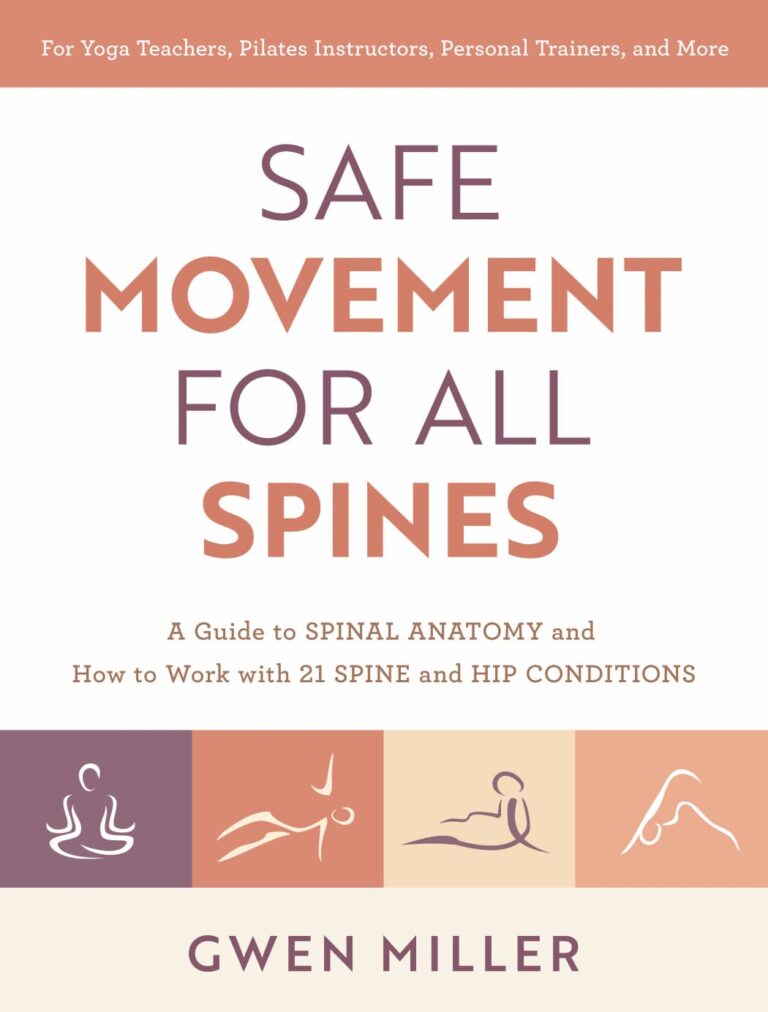
Foundations 9 Classes Full Course Prerecorded | Mentorship Foundations Full Course 9 Live/Zoom Practical Classes | A-la-carte 1 Prerecorded Class 1 Live/Zoom Practical Class | |
Pre-Recorded Lectures | 9 | 9 | 1 |
Study Guides | 9 | 9 | 1 |
Student Assignment Sheets | 9 | 9 | 1 |
Live Practical Classes | n/a | 9 | 1 |
Practical Course Recordings For Review | n/a | 9 | 1 |
Private Facebook Group | Yes | Yes | Yes |
Copy of Safe Movement for All Spines | Yes | Yes | Yes |
Group Mentoring | n/a | Yes | Yes |
Individual Mentoring + Case Study Support | n/a | Yes | n/a |
Lifetime Access To Curriculum | Yes | Yes | Yes |
50% Off Single-Subject Practical Sessions | Yes | 5 | n/a |
20% Off Mentorship | Yes | n/a | Yes |
ACE CECs | 3.6 | 7.2 | 0.4 |
NCPT | 19 | 60 | 4 |
IAYT CECs | 20 | 72 | 4 |
YA CECs | 19 | 70 | 4 |
Course List
The following 9 courses are included in the Mentorship option above.
You may enroll in single and multiple courses by choosing your options below and adding them to your cart.
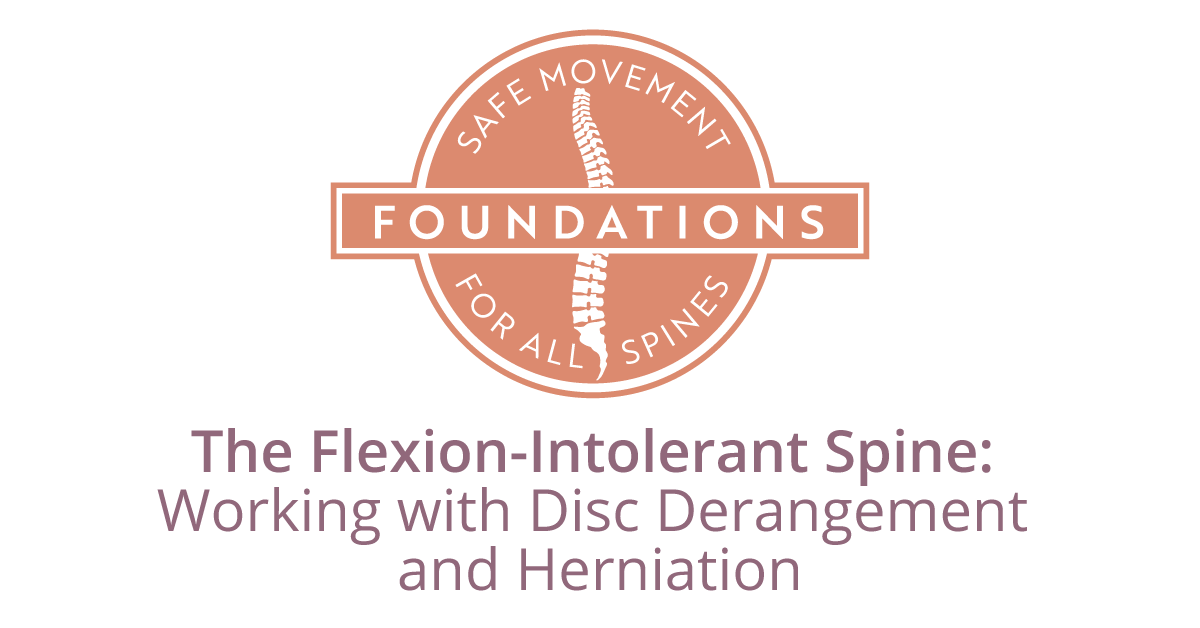
The Flexion-Intolerant Spine:
Working with Disc Derangement and Herniation
The Flexion-Intolerant Spine: Working with Disc Derangement and Herniation is based on Chapter 1 of Safe Movement for All Spines. Learn how to move beyond “no loaded flexion” into a realm of powerful, proven tools and techniques to help decrease pain and restore vitality. Apply assessments to differentiate the effects of disc herniation in movement, strength and sensation. Learn when to refer to allied medical professionals and utilize proven techniques within the scope of practice of a movement teacher to help facilitate healing.
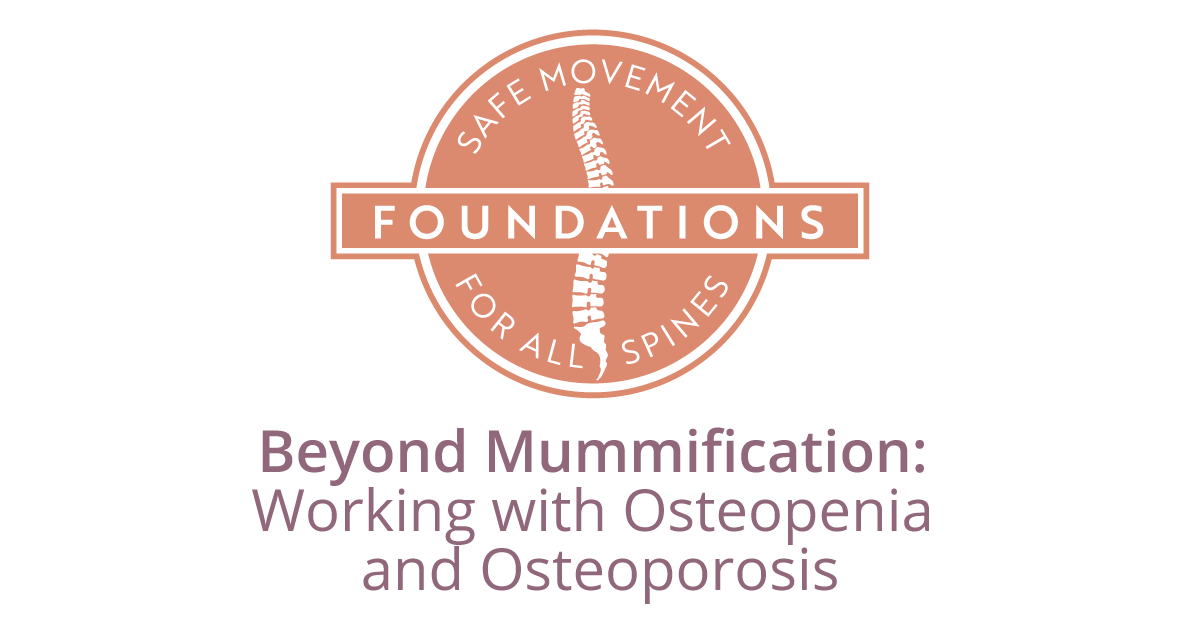
Beyond Mummification:
Working with Osteopenia and Osteoporosis
Beyond Mummification: Working with Osteopenia and Osteoporosis is based on Chapter 2 of Safe Movement for All Spines. Learn about working with people who have osteopenia or osteoporosis, beyond “no flexion” strategies that basically mummify torso movement. Really understand the treatment options for bone density loss, and the most important factors to consider when working with this population. Explore movements designed to help prevent fractures and rebuild bone density, and exercises to strengthen muscles and reflexes involved in balance and fall prevention.
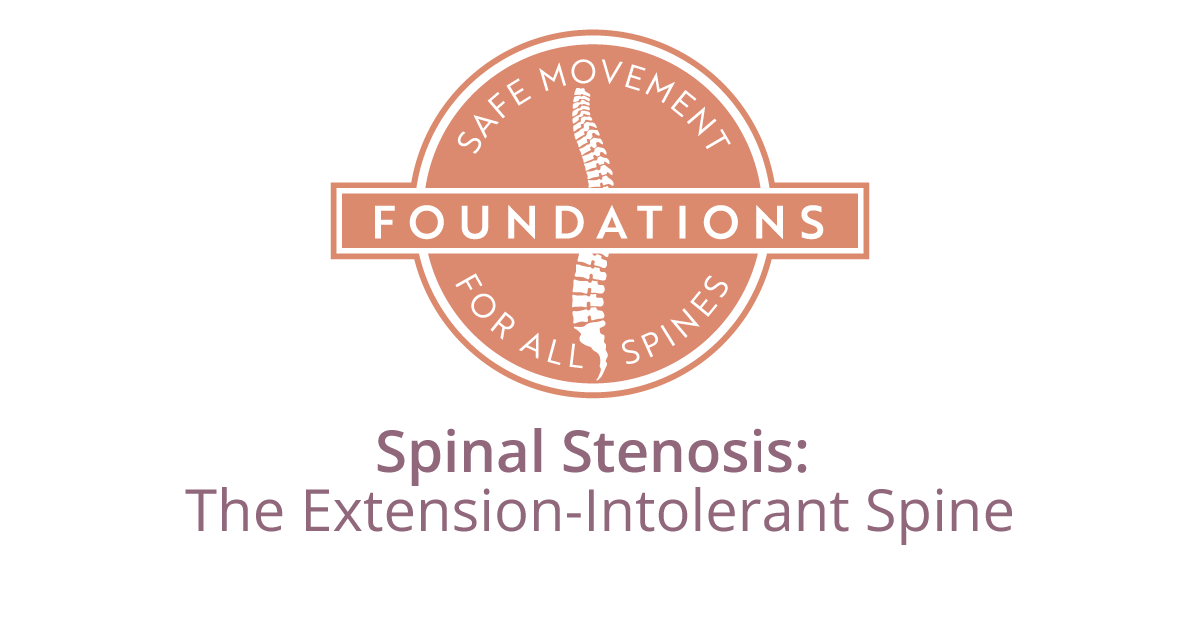
Spinal Stenosis: The Extension-Intolerant Spine
Spinal Stenosis: The Extension-Intolerant Spine is based on Chapter 3 of Safe Movement for All Spines. Learn how multidisciplinary approaches can organize movement effectively for pain relief, strength, flexibility, and long-term quality of life. This module includes information about degenerative disc disease (DDD) and degenerative joint disease (DJD), also called spondylosis, common causes of stenosis.
Learn how to help the person with spinal stenosis find more comfort and ease in movement based on the causes for, and location of, their spinal stenosis. Exercises to strengthen without exacerbating pain help the person find long-term solutions for an active life.
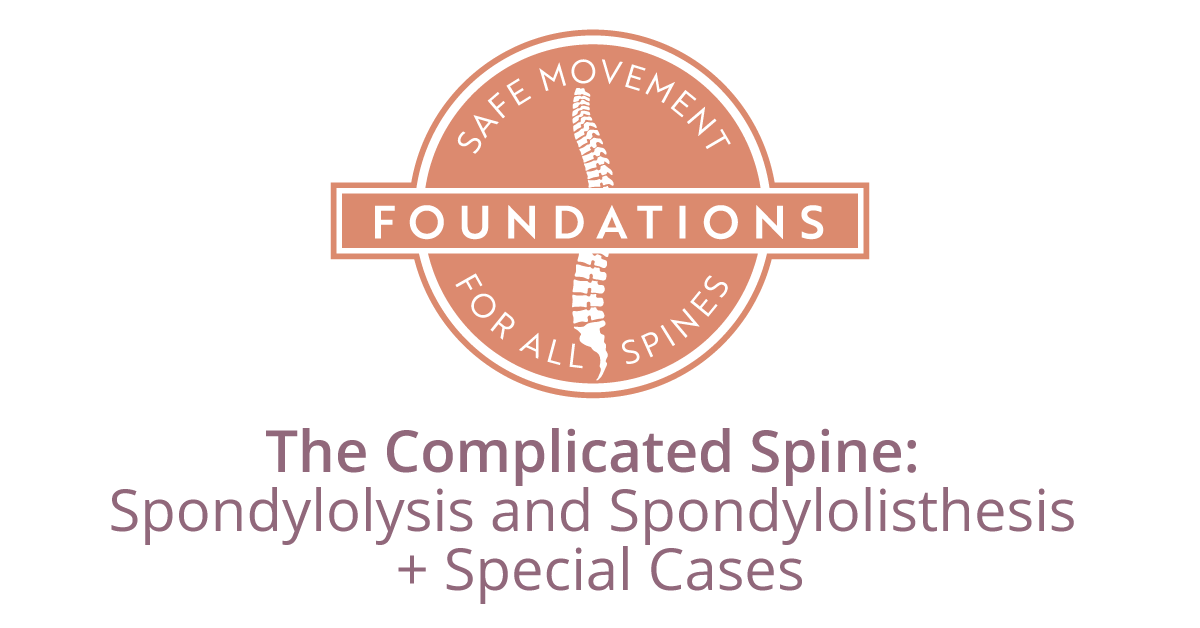
The Complicated Spine:
Spondylolysis and Spondylolisthesis + Special Cases
The Complicated Spine: Spondylolysis and Spondylolisthesis + Special Cases is based on Chapters 4 and 10 of Safe Movement for All Spines. Learn specific guidelines for safe movement and healthy maintenance of the spine with spondylolysis or spondylolisthesis and anterolisthesis or retrolisthesis. Incorporate creative variations of Pilates repertoire that are challenging, inclusive and fun, while biomechanically safe for the “spondy” spine.
What do you do when a person has a complicated spine, with multiple conditions? This course empowers instructors to learn, understand and apply a priority hierarchy when someone has multiple issues, and some of the contraindications are conflicting. An example of the problem-solving and solution-oriented thinking for these special cases is illustrated by Susan’s story, a client case study that offers powerful lessons about how healing can occur.
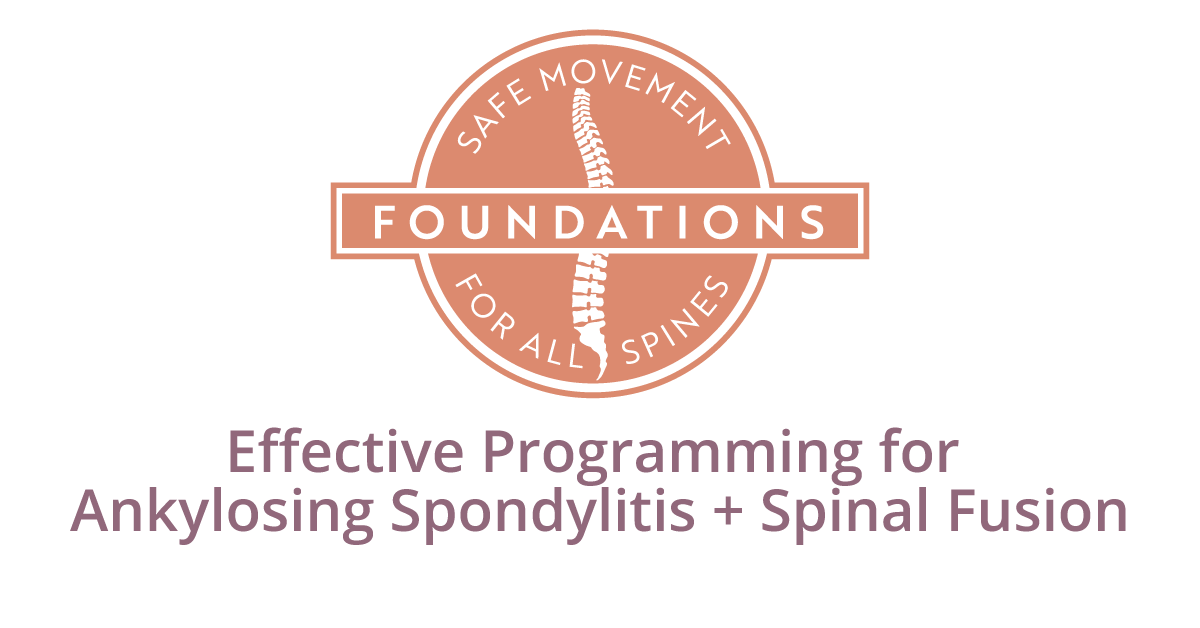
Effective Programming for Ankylosing Spondylitis + Spinal Fusion
Effective Programming for Ankylosing Spondylitis + Spinal Fusion is based on Chapter 5 of Safe Movement for All Spines, with additional information about working with people who have surgical spinal fusions. Learn about the stages of AK, a progressive form of arthritis, and become empowered to guide and experience healthy and appropriate movement at each stage. Learn assessments that help refine your teachers’ eye when working with natural or surgical spinal fusions. Understand what to watch for from various angles to determine appropriate ranges of movement. Improve specificity in exercise selection and appropriate variations for the person with a partial or total spinal fusion.
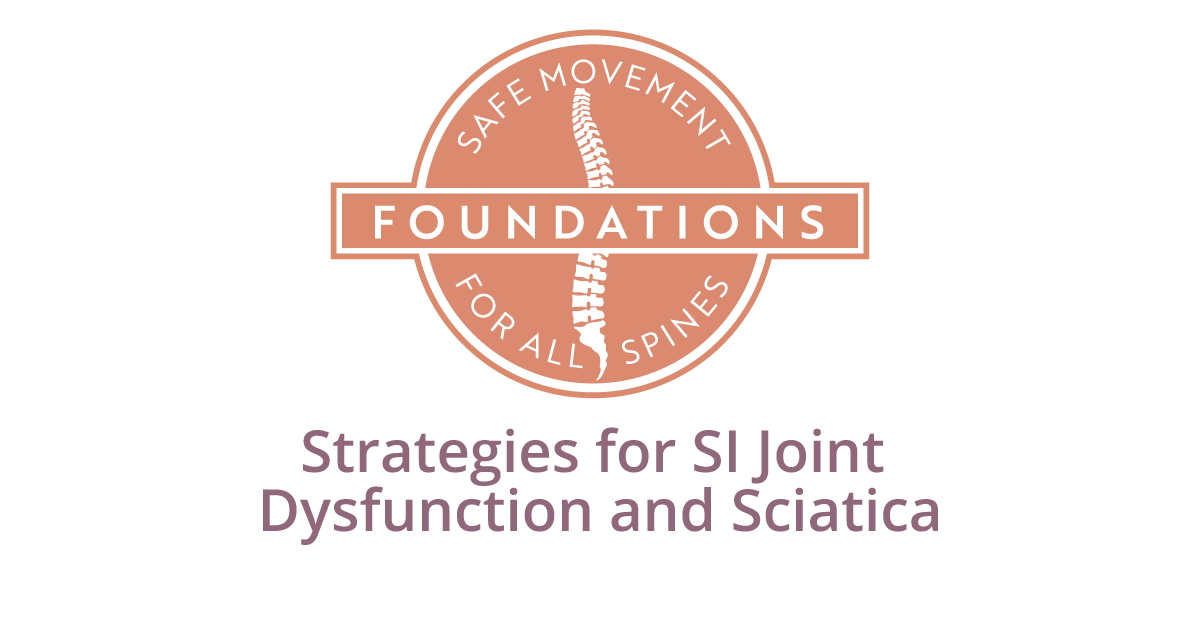
Strategies for SI Joint Dysfunction and Sciatica
Strategies for SI Joint Dysfunction and Sciatica is based on Chapter 6 of Safe Movement for All Spines. Explore the sacrum as the keystone for stability, movement, and force transference between the spine, pelvis, and femurs. Learn what issues can affect this delicate interplay, creating dysfunction and causing pain, and simple yet effective solutions to help restore and maintain pain-free movement. Assessments that are within the scope of practice for movement teachers guide exercise and prop selection. Learn effective strategies for both acute and chronic SI Joint dysfunction, and multiple techniques for alleviating sciatica that are immediately actionable in private or group sessions, and may be assigned as home programs.
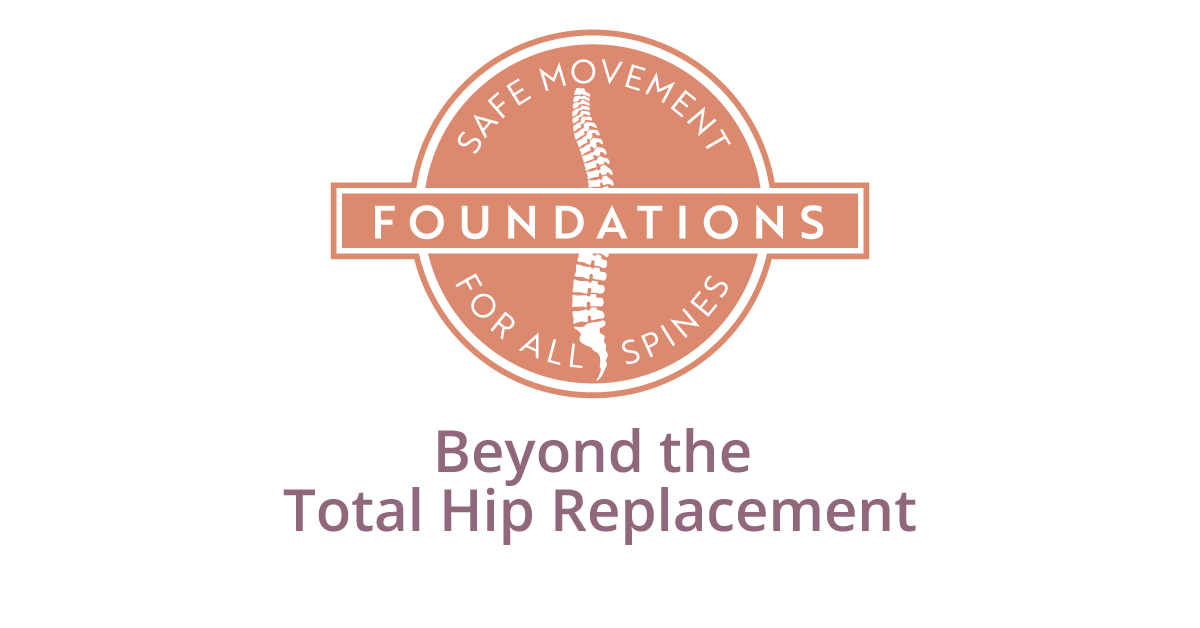
Beyond the Total Hip Replacement
Beyond the Total Hip Replacement is based on Chapter 7 of Safe Movement for All Spines. Confidently work with a variety of total and partial hip replacements by understanding the implications of their contraindications. Learn how to assess soft-tissue issues, hip degeneration, and structural variations in hip structure. Understand how to apply intelligently designed movements for optimal function and healing. Understand structural variants and explore what these mean in terms of ranges of movement and exercise selection. Utilize specific guidelines and learn cueing for safe and inclusive exercise participation.
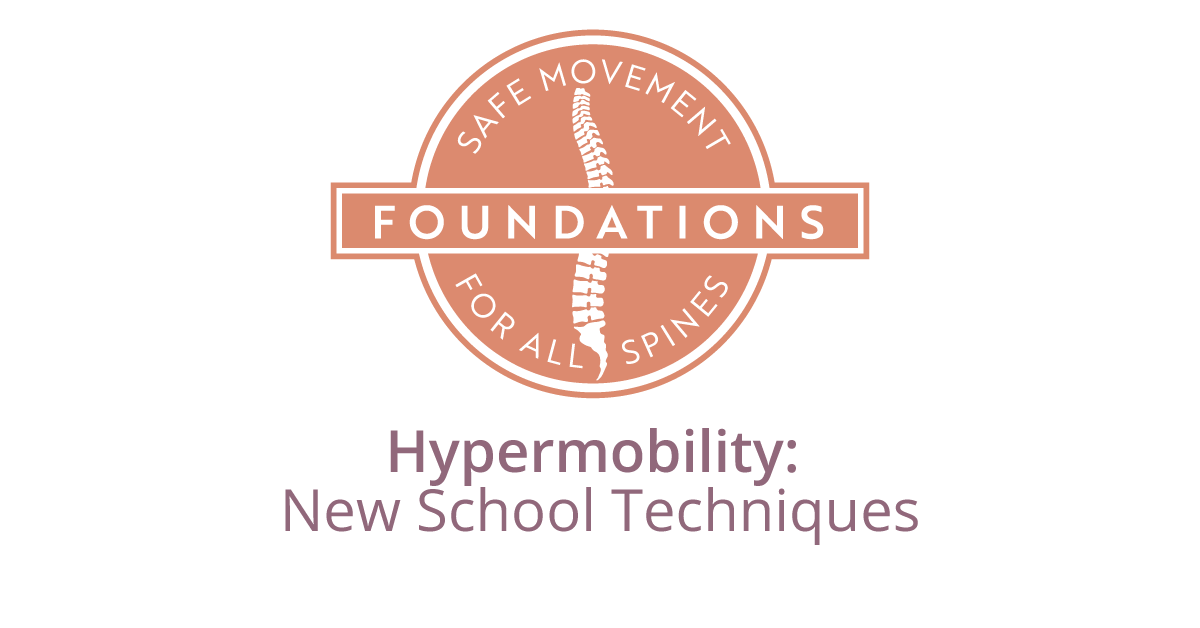
Hypermobility: New School Techniques
Hypermobility: New School Techniques is based on Chapter 8 of Safe Movement for All Spines and takes a deeper dive into learning and understanding hypermobile physiology, neurology, and assessment. A broader perspective, informed by pain science and biomechanics, takes the teacher beyond old paradigms of limiting range of motion as a solution for hypermobility. Exploring multiple diagnoses in hypermobile populations gives valuable information that helps guide teacher and student in navigating health and movement environments. Application of uniquely developed exercises and manual techniques prepare the client living in a hypermobile body for movement. Move beyond the Old School myths of working with a person who has a hypermobile body and assess, understand and teach the body in front of you.
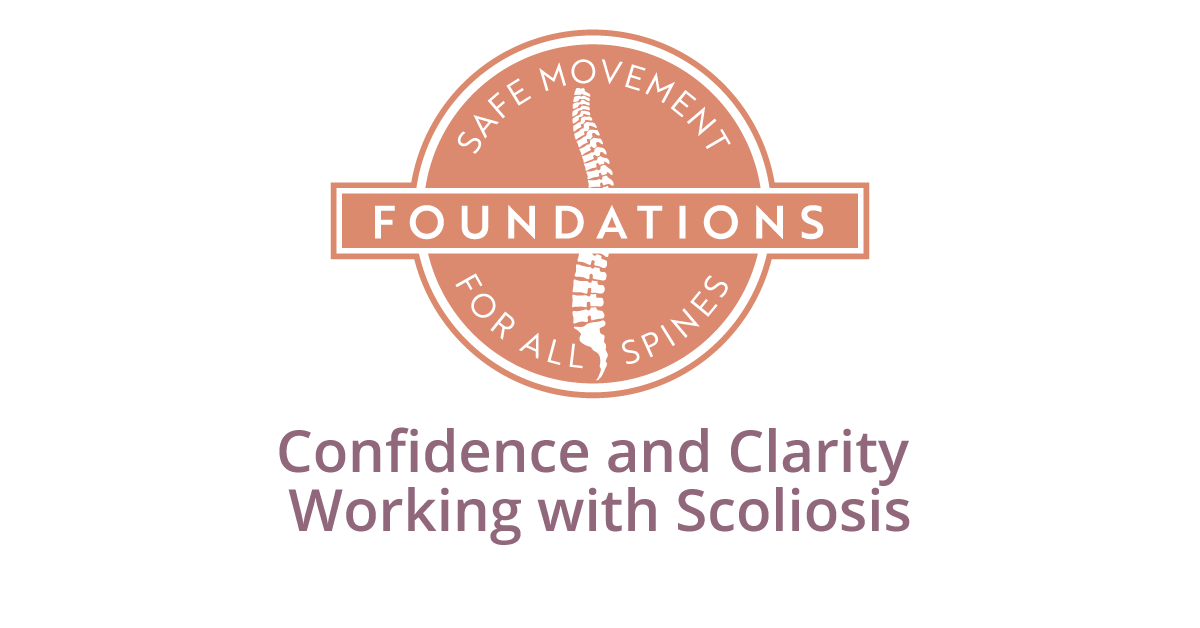
Confidence and Clarity Working with Scoliosis
Confidence and Clarity working with Scoliosis is based on Chapter 9 of Safe Movement for All Spines. So much is written and taught about scoliosis—how do you really know what to do? We move from a “fixing” mindset to facilitating a mutually empowering relationship with the person who has scoliosis. Instructors learn and understand the various considerations and ideas about working with the person who has scoliosis. Overview of various methodologies, the theories that support them, and how to determine which methods to employ and when. Learn what best practices to employ – and what to avoid – when working with a person who has scoliosis. Learn techniques and exercises that can be easily incorporated into 1:1 or group sessions for elongation, de-rotation and strengthening. This course is a great intro and overview with depth prior to participating in more intensive scoliosis – specific curriculum.
